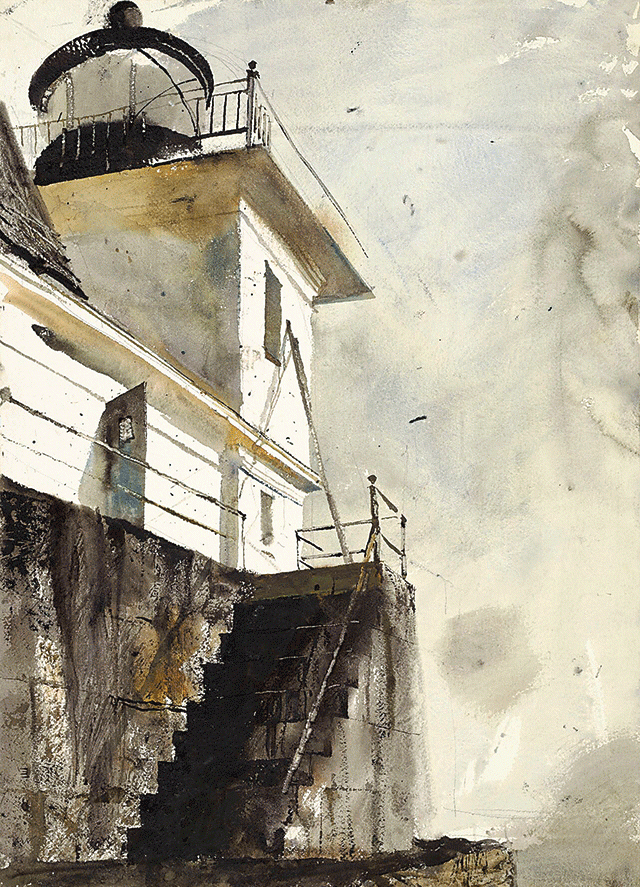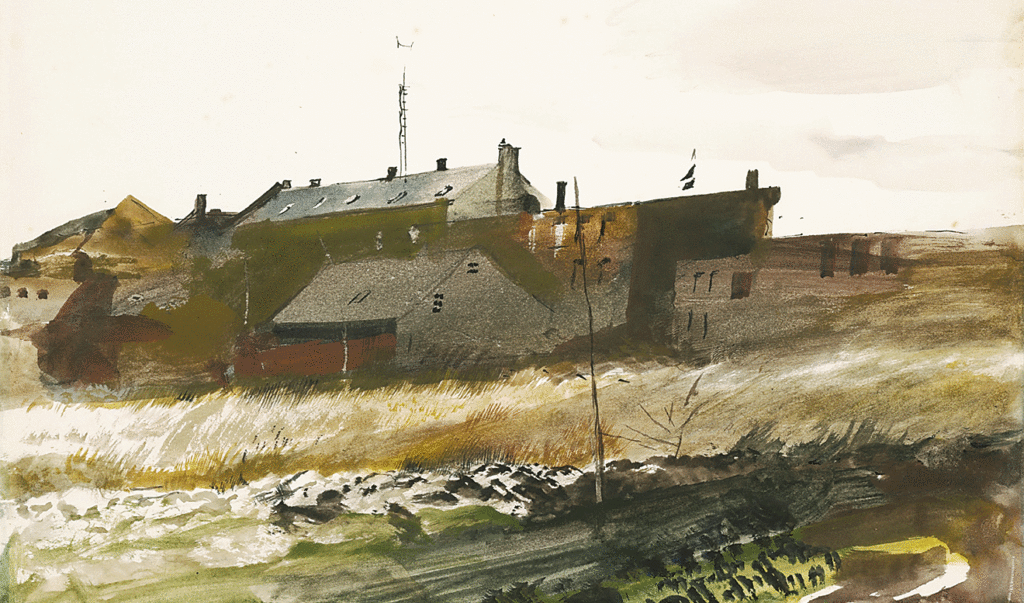When Edward Hopper (1882-1967) visited Rockland in 1926, he referred to it as “a very fine old place with lots of good-looking houses but not much shipping.” His watercolors from that stay represent a sampling from his repertoire, including a sea captain’s residence, a haunted house, and some waterfront studies of various vessels, some working, some neglected.
Where Hopper spent six weeks in the city, Andrew Wyeth (1917-2009) visited Rockland off and on for a good part of his life, sometimes with a watercolor set-up in hand. As made evident in “Andrew Wyeth: In Rockland” at the Farnsworth Art Museum (through Nov. 4), the master realist painter shared his predecessor’s fondness for the overlooked and ungainly—and, in some cases, his approach to a particular subject: Wyeth’s study of the deck of The Sophia, the last of Rockland’s steam lighters, could pass for a Hopper.
Wyeth’s admirers have always been amazed by his ability to paint every blade of grass. In this show, the rigging of various vessels provokes the jaw-dropping. In The Slip, 1958, he employed drybrush watercolor to precisely render the masts of the schooner Eva S. Cullison—and the grassy meadow it appears to surreally sail through. It’s a tour de force of realism.
In Harjula’s Airport, 1964, Wyeth turned his watercolor to recording local pilot Joe Virchow climbing into his yellow Boeing-Stearman 75 biplane. With its windsock and deep grass, the airport, owned and operated by flight instructor Arthur Harjula, epitomizes the rural stopover.
When it came to figures, Wyeth was a master. Of note here is the study of a brakeman holding a light in front of a looming railcar. The man responsible for ensuring that the couplings between cars were properly set is rendered in a flurry of brushstrokes in a manner reminiscent ofHonoréDaumier. Elsewhere, a lone sailor stands on the bridge of the submarine USS Angler, which visited Rockland in 1964. The front of the vessel, which saw action in the Pacific during World War II, looks like the head of some sea monster.
Wyeth also knew how to paint white structures. The chandlery building in the Snow Shipyard (home now to the Sail Power and Steam Museum) stands out as brilliant backdrop to a meticulous study of an antique speaking trumpet once used to amplify a captain’s voice so his orders could be heard the length of the ship.
An added amenity, if you will, for this show relies on technology: visitors are invited to dial a number on their phones to hear an oral history related to certain pieces on display. It’s a nice touch as many of the views in Wyeth’s Rockland pieces have changed. For example, where the lime kilns on Crockett’s Point pictured in an untitled 1958 watercolor once burned 24 hours a day, today the FMC Health and Nutrition plant (now owned by DuPont) produces carrageenan from seaweed gathered around the world. Wyeth’s painting reminds us that we’ve moved from the local to the global.

Rockland Light, by Andrew Wyeth.





